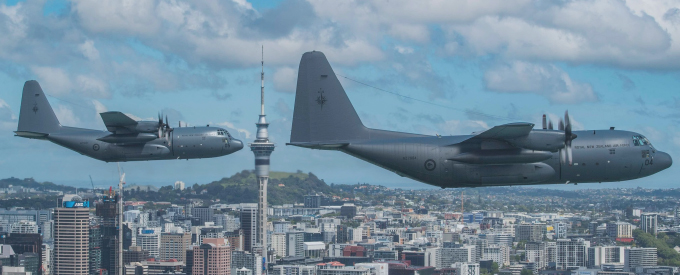2024-09-11
C-130J Super Hercules Gives New Zealand a Tactical Lift
Lockheed Martin has ushered in a new era of tactical airlift capability for New Zealand with the delivery of the first C-130J Super Hercules.
The aircraft was officially handed over to the New Zealand Ministry of Defence and New Zealand Defence Force at a ceremony held on August 8 at Lockheed Martin’s Marietta facility in Georgia.
For almost six decades, the Royal New Zealand Air Force’s (RNZAF) C-130Hs have served as essential first-response resources for New Zealand and the entire Indo-Pacific region.
Crews from 40 Squadron located at RNZAF Base Auckland, will operate the new C-130Js, representing one of the most advanced configurations of the Super Hercules. Rod McLean, vice president and general manager of Lockheed Martin’s Air Mobility & Maritime Missions line of business, highlighted the global impact of New Zealand’s C-130s. He noted that these aircraft support humanitarian and disaster relief operations and partner with allies in military missions.
The new C-130J fleet will enhance these critical functions by increasing allied alignment, extending reach, and improving capabilities and performance for demanding tactical airlift requirements.
Fleet Upgrade
In 2020, New Zealand announced plans to upgrade its fleet of five C-130Hs by acquiring five C-130J-30 variants through a Foreign Military Sale with the U.S. Air Force.
A collaborative project team, comprising members from New Zealand’s Ministry of Defence, the New Zealand Defence Force, the U.S. Air Force, and Lockheed Martin, has overseen the delivery and training programmes for the new aircraft.
Always evolving and innovating, the Super Hercules sets benchmarks for tactical airlift missions, offering advantages not found in other medium-sized tactical airlifters currently in production or operation.
These discriminators include proven operational readiness with ease of transition, reliability and combat airdrop capabilities, certification by more than 20 airworthiness authorities, and enhanced survivability.
The C-130J delivers interoperability with NATO and global air forces, robust industrial partnerships and low life-cycle costs with significant fuel savings resulting in a reduced carbon footprint compared to other medium-sized jet airlifters.
Primary Transport
The C-130 Hercules handles the tactical airlift mission, operating from rough, dirt strips and serving as the primary transport for airdropping troops and equipment into hostile areas.
As the backbone of NATO’s airlift superiority, it spans 26 operators across 22 nations. With nearly three million flight hours logged across the global fleet of 540+ C-130Js, invaluable insights gained from missions in every scenario equip the C-130J for what’s next.
The C-130J’s performance is proven with more than two million flight hours supporting tactical airlift, search and rescues, special operations, commercial, and refuelling missions around the globe.
Lockheed Martin provides unique insights to keep the global fleet mission-ready through dedicated support channels.
The C-130J Super Hercules features Dual Head-Up Display (HUD) for enhanced situational awareness, Block 7.0/8.1 software, automated maintenance fault reporting, an integrated defensive suite, and a 250-knot ramp/door.
Versatile Cargo Capacity
Using its aft loading ramp and door, it can accommodate a variety of oversized cargo, including everything from utility helicopters and six-wheeled armoured vehicles to standard palletised cargo and military personnel.
In an aerial delivery role, it can airdrop loads up to 42,000 pounds or use its high-flotation landing gear to land and deliver cargo on rough, dirt strips.
The flexible design enables it to be configured for different missions, allowing one aircraft to perform the role of many. Much of the special mission equipment added to the Hercules is removable, allowing the aircraft to return to its cargo delivery role if desired.
The C-130J, the latest model in the C-130 fleet, replaces older C-130Es and high-time C-130Hs. It features advanced technology that reduces manpower needs, lowers operating costs, and provides life-cycle savings.
The J model climbs faster, flies farther, cruises faster, and has shorter takeoff and landing distances compared to older versions. The C-130J-30, a stretched version, adds 15 feet to the fuselage, enhancing cargo space.
The C-130J/J-30 major system improvements include advanced two-pilot flight station with fully integrated digital avionics, colour multifunctional liquid crystal and head-up displays and state-of-the-art navigation that includes a dual inertial navigation system and Global Positioning System. The aircraft also features fully integrated defensive systems, low-power colour radar, digital moving map display, new turboprop engines with six-bladed all-composite propellers and a digital auto pilot.


No Comments